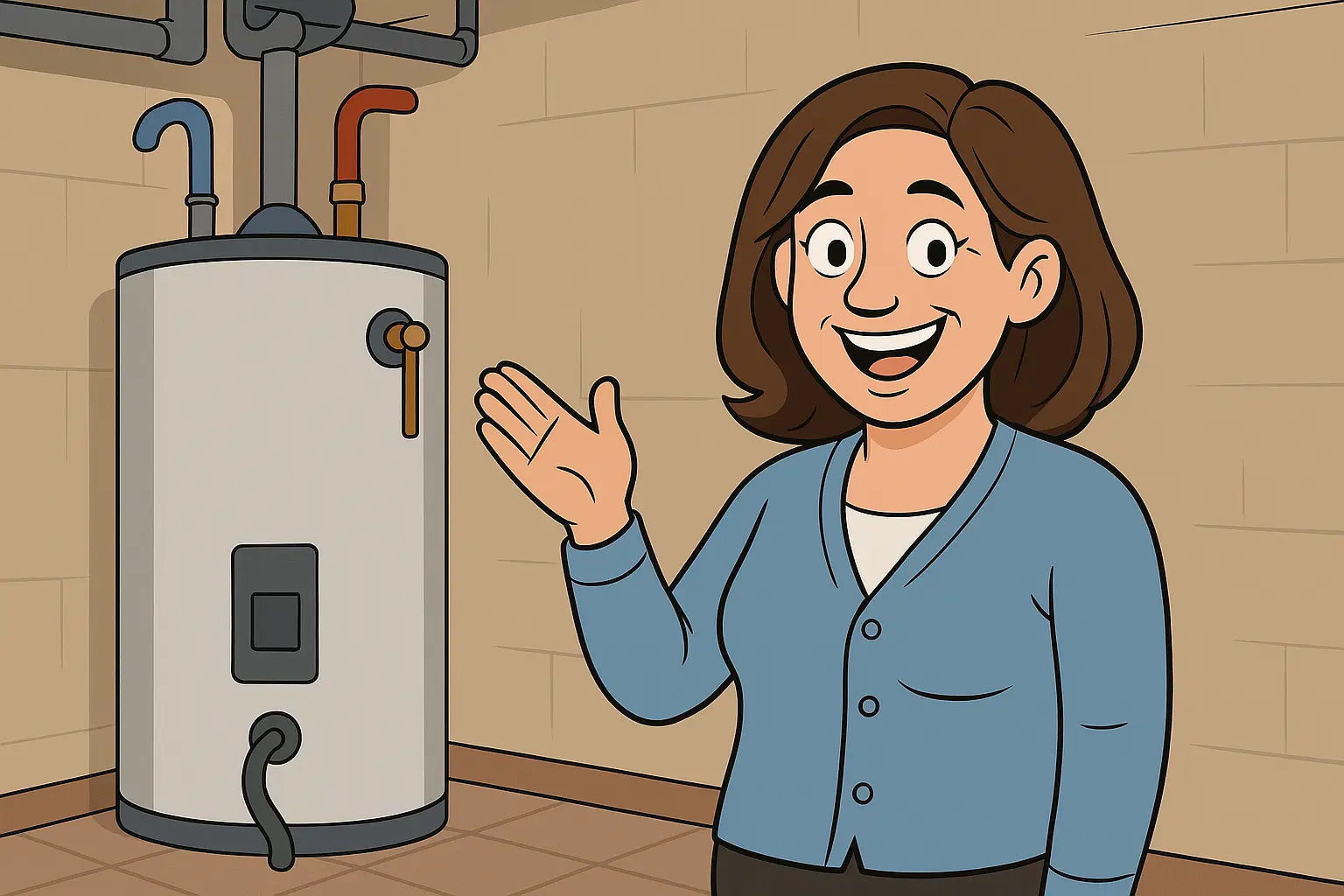Hi There, Friend! 👋
It’s Samantha again—your go-to gal for making smart, confident choices around the house. If you’re like me, you love a long hot shower, clean dishes, and the occasional soak in the tub… all made possible by your trusty electric water heater.
But what happens when the water runs cold, the tank hisses, or it just won’t behave? 😫 Before you reach for the phone to call a plumber, take a deep breath. You can troubleshoot your 50–60 gallon electric water heater—and in many cases, fix it yourself.
Let’s walk through the seven most common problems you might run into, and how to solve them without spending a dime on a service call.
1. No Hot Water at All? Check the Circuit Breaker First 🧯
This one might sound obvious, but it’s overlooked so often. If your water heater is completely cold, don’t assume the worst. Head to your home’s electrical panel and check if the water heater breaker has tripped.
If it has, flip it off and back on again. Then wait about 30–60 minutes to see if hot water returns. Boom 💥—you might be back in business without lifting a wrench.
2. Warm Water but Not Hot? Replace the Upper Thermostat 🔥
Electric water heaters have two thermostats—one upper and one lower. If you're getting warm (but not hot) water, the upper thermostat might be failing.
Here’s what to do:
-
Turn off power at the breaker ⚠️
-
Open the upper access panel on your water heater
-
Use a multimeter to test for continuity (if you’re comfy with tools)
-
If the thermostat’s bad, you can grab a replacement at most hardware stores for under $30
Don’t worry—Family Handyman has a detailed guide with diagrams to help you swap it out safely.
3. Hot Water Runs Out Too Fast? Time to Check the Dip Tube 🕳️
Your dip tube is a small but mighty part. It directs cold water to the bottom of the tank so it can heat up properly. If it’s cracked or broken, cold water stays at the top… and mixes with hot water before it’s fully heated.
You might notice:
-
A sudden drop in hot water supply
-
Lukewarm water quickly after turning on the tap
Inspecting or replacing a dip tube isn’t complicated, and this Energy.gov article gives a solid overview of water heater internals, including dip tubes.
4. Strange Noises from the Tank? Flush That Sediment! 💦
Popping, cracking, or rumbling sounds from your water heater? That’s sediment buildup from hard water. Over time, minerals settle at the bottom of the tank and cause:
-
Efficiency loss
-
Noisy operation
-
Premature wear and tear
Solution: Do a tank flush at least once a year!
Here’s a quick how-to:
-
Turn off the power
-
Connect a hose to the drain valve
-
Open the valve and let water flow until clear
-
Refill and power back on
Need a step-by-step visual? This guide by My Health Alberta makes it easy, even for first-timers.
5. Water Smells Like Rotten Eggs? It’s the Anode Rod 😷
Eww. That sulfur smell is often caused by bacteria reacting with the anode rod in your water heater. This is especially common if your home uses well water.
Try this:
-
Replace the magnesium anode rod with an aluminum/zinc alloy rod to stop the reaction
-
Flush your tank with hydrogen peroxide or chlorine solution (not together!)
Need guidance? Check out Corro-Protec's tips for safe disinfection practices.
6. Leaks Around the Base? Could Be the T&P Valve or Drain Valve 💧
A leak doesn’t always mean your whole water heater is toast. Two common culprits:
-
Temperature & Pressure Relief (T&P) Valve: Designed to release excess pressure—can fail or leak
-
Drain Valve: If loose or cracked, it may drip slowly over time
First, determine where the leak is coming from. If it’s either of these valves, replacements are affordable and available at any hardware store. Just remember: always power off and drain the tank before replacing parts.
7. Water Too Hot? Adjust the Thermostats Safely 🔧
If your water feels like it’s boiling hot (and dangerous for kids or seniors), you might need to adjust the thermostat. Here’s how:
-
Cut the power
-
Open both upper and lower access panels
-
Use a flathead screwdriver to lower the temp (120°F is ideal)
Just remember—don’t go lower than 120°F, or you risk bacterial growth like Legionella.
When to Call in the Pros 🚨
If you're facing these red flags, it’s time to call a licensed plumber:
-
Rusty or discolored water
-
Repeated circuit breaker trips
-
Tank leaking from the body (not the valves)
-
Signs of electrical shorting or scorching
These issues usually point to larger system failures or safety hazards that need professional diagnosis.
Final Thoughts from Samantha ☕
Look at you, hot water hero! 🔧 You tackled everything from lukewarm showers to noisy tanks like a true pro. The truth is, most electric water heater issues are fixable with just a bit of know-how, a few tools, and a calm approach—and I hope I helped you feel confident doing just that.
And hey, if your old unit just isn’t cutting it anymore, don’t forget to check out The Furnace Outlet’s collection of 50–60 gallon electric water heaters. They’re efficient, reliable, and perfect for households that demand daily comfort.
Need to know why regular maintenance on your water heater is so important? Visit my guide: The Real Cost of Neglect.
Until next time, keep those bubbles hot and your troubleshooting game even hotter. 🔥🛁
—Samantha, Home Comfort Advisor







